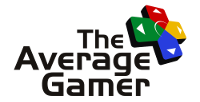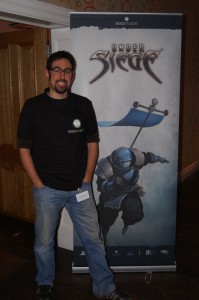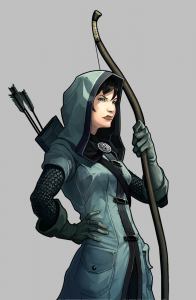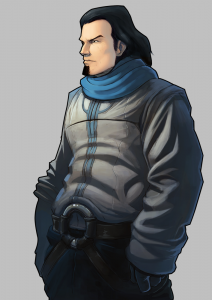Building a Dev Studio – Interview with Filipe Pina
- Updated: 15th Dec, 2010
 Ever wondered what it takes to build a up an independent development studio from nothing to launching new titles on both the DS and PlayStation Network? Portugal-based Seed Studios was founded in 2006 and will be launching their PSN real-time strategy Under Siege later this month. We caught up with producer Filipe Pina at the Under Siege preview to find out how they did it.
Ever wondered what it takes to build a up an independent development studio from nothing to launching new titles on both the DS and PlayStation Network? Portugal-based Seed Studios was founded in 2006 and will be launching their PSN real-time strategy Under Siege later this month. We caught up with producer Filipe Pina at the Under Siege preview to find out how they did it.
Can you tell me about the role of a producer?
FP: I don’t really know… We are a very small team, we have multiple roles as in every small company. Basically, I don’t know if that is my job – what I did was organise with my colleague over there. We’d organise the team, set the goals, make the decisions with my partners – we’re doing this, we’re doing this that way. Also doing all the contracts for production with Sony – getting contracts in place, getting kits, getting the ideas in place, but it was a team effort.
I did that but I also did the design for some things like the interface; some modelling because I came from a modelling and design job. We all share a lot of things but the production side of things means I’m contact with my partners, my investors and daily trying to organise the production team and the outside world.
It’s like project management?
FP: Yeah, i think so. Really I do so many things it’s just “Okay, I’m a producer.” I could be a director or maybe I could be something else.
How big is the team?
FP: 20 people. 15 hands-on making the game and then we have a lawyer, accountant, all that sort of stuff. It was all the team in Portugal. We outsourced the video of course to [unintelligble] Animation and Q&A was done by an outsourced team, too. We were doing this for two and a half years. It’s pretty long
Is it? Because it’s not just an RTS; for the amount you’ve created – building the editor, building in all the social networking…FP: I think it’s too long because we were not… we were predicting less time to do it and as we reviesed the calendar, we starting seeing things increased. I say too long because i was thinking of seeing it finished sooner – can’t remember how long. It doesn’t matter. What we said when we started looking at the first version of the game was “This is going in a good direction so lets just continue going on investing, making sure we don’t cut features or cut back on something. We really need to have everything moving along in the game.”
Like the five iterations of interface we discussed earlier.
FP: Yes, exactly. Until it’s right. It’s called iterative design.
So what did your investors think of that? They thought they were getting a return much earlier?
FP: No, the investors were great. They knew the risks of doing this, especially since it was a very hard decision, being with Nintendo DS, making boxed titles that had the publishers were paying? Suddenly oh, we’ll be our own publisher, so we’ll take all the risk, do the game, publish it ourselves, 6 languages and all that. But we said, if we don’t do it this way, the reason for me doing videogames is that I love videogames. I want to be involved with everything. I don’t want some publisher deciding this is blue or red? We decide. So that was a passionate decision of “We want to do it this way. Let’s do it.”
Will it sell? Of course you never know, but since we are very confident we would do a good job, a good product, we are proud of what we do. As long as we stay faithful to this passion, I think we’ll get where we want to go. We got where we wanted. It’s just a question of seeing if people like it.
We had a very good reaction in September. We were at a technological fair in Lisbon, a game show. It was about technology and there were about 500 people passed by our booth to play the game. And everyone played it – an 8 year old kid was able to play it. Old guys were able to play it. Entire families were able to play it. So we were very happy because up to that point we didn’t have such a big QA team doing playtesting. We were very happy to see it work. The decisions were good on the interface, the design, everything so we were happy.
From that point on we were sure that we’d made something to be proud of. To be happy with.
Your investors – are they games people? Are they big fans or are they business people?
FP: One of our investors, he plays Warcraft 3. He played it like, hardcore. He played it online and he was really good at it. So they all have consoles at home, and play of course, so they understand what we wanted and where we’re going. They give us feedback on the administrative part because they run other companies so they understand how businesses work with the normal day-to-day life of paying salaries and doing the normal business side that we did not understand. And we brought in the knowledge of programming and design.
Your investors were very much hands-on and involved the whole time?
FP: Hands-on, totally. They are here [points across the room]. They’re part of the company – Over there is the CEO, he administrates the business side of things. Another is not so hands-on but he is a major investor and we have another one who is not here. Antonio has a company of 3D design for architectural buildings and televison; they do aerial shots of buildings that will be there later.
So you call them investors but it’s basically a self-funded company? The people who run the company [on a daily basis] are the people putting money in?
FP: Yeah, I also own a piece of the company so it’s also my money. If this goes wrong I will go back to my mom and dad and say “Hey, it didn’t work. I’m back!” Hehe… but it won’t happen. It’s almost impossible for that to happen.
So we like it. We think it’s a good environment to work. The guys that we hired see us as not… I am a producer but I have my desk in the middle of everyone else. I do the calls to talk about anything and everyone knows what’s going on. If there’s a problem of any kind, everyone knows. Even the secretaries – Everyone is very much aware of what is going on. and everyone plays the game. So the idea was always to keep a team like that. A nice cozy team.
You said prior to the interview that Portugal doesn’t have a big games industry. What was it like as a new development house working with Sony for the first time?FP: When we started with the idea of this 10 years ago – the company was founded 4 years ago but we started with the idea 10 years ago when we were working our normal day-to-day jobs – the challenges posed against us were basically the ones that, since portugal does not have games industry of people building games it is normal that companies like Nintendo, Microsoft and Sony are a little bit, you know, “Who are these guys? They don’t have history.”
If I was in any of those positions I would say “They don’t have any history of doing this. They won’t be able to to do it. Or if they will, they will probably do a bad job,” which is normal. So what we did was, in the first 6 years we learned for ourselves the technology and all the development, without consoles – just on the PC.
The first step when we founded the company was do a very little game for kids, on the PC. We kind of grew from that. Next was a Nintendo DS game, a boxed game. We did it with a publisher that helped us because we could not go directly to a big house and say [throws his hands in the air] “Hey, we’re going to make games!”
“Yeah, but who are you guys? What games have you made?”
“None”
“Oh, so okay, whatever”
The problem was always that you can’t make games for consoles because you haven’t made them before, but if I want to make them – it’s a loop. How do I get into the loop? So the way to enter was to be really persistent, and to be really… to do good presentations – we had a prototype for the game that we presented – and to do good designs.
To present, we had a very big manual of the game. So when we started talking to Sony they were very happy to see that we were very passionate about this and they said “Okay, let go. Let’s see what you got. Step by step, let’s see what you got.” Nintendo was the same. We needed to have the publishers on our side to say “Oh these guys, they can do it. They’ve already showed us this prototype – we believe that they can do it”
So the next step was this one [Under Siege on PSN]. As we open a new door, more doors open. As we are finishing this, lots of doors are opening. We started with no doors to open and now we are able to go anywhere. That was part of… that was a challenge – not only making a game but getting into the industry without even a single contact on the phone or an email to start with. That was part of my job role as well – to start opening up all this. I’m normally the spokesman, I’m good at it so I did that job. We all did the best type of job that we were suited to do. It worked.There was a Sony guy here earlier. He was very happy with the final result and of course they’re happy that it’s on their machine. We’re not… we’re machine-agnostic.
You’ve done games for Nintendo and you’ve done Sony now. This game is PlayStation-exclusive, isn’t it?
FP: There’s nothing we’ve been saying that it’s an exclusive. We decided it was exclusive because we cannot… we are too small to do multi-platform games. It’s too much. And also I don’t want to split the community. If I do this on two platforms then I have levels uploaded from one machine… so there were a lot of decisions frm the beginning of which machine does this game fit into better and Sony’s machine was definitely the one because in 2007 they were opening the doors with Little Big Planet and user-created content. These guys are doing the thing that we want to do so it makes sense. They also have free online access and all those tools with YouTube and Facebook, so it made sense on this machine. It doesn’t mean we won’t make anything else on any other machine but of course now we are experts on this one. It makes sense for us on a business, technology and also artistic side. I want my art to sing.
[The team will say] “Oh no, we have to change to another machine. Oh, no!” They are right, that’s boring. I want to make games. I don’t want to be worried about if it’s Sony or Microsoft or whoever – I want to make games and Sony were very good. They were great. They were very supportive of the process. They have an internal forum where we were talking with the creator of the Move, Anton from America. He called us! Just calling us to say “Oh, how are you doing?” they are very very good to work with because they do this open relationship and it’s right. We were very happy with the support – not in money or in the publishing side but on the “Go this way” or “Talk with this guy”. That was very helpful.
End of part 1
Pop over to part 2 of this interview, where we discuss bastards, trophy-whores and other perils of opening a 12+ game to the wider gaming community.
Have you ever wanted to start your own games studio? What’s stopping you? Tell me in the comments.




Pingback: Keeping It Clean – Interview with Filipe Pina Part 2 - The Average Gamer
Pingback: Sugestões – 6 de Dezembro de 2011
Pingback: Under Siege Release Date Announced - The Average Gamer